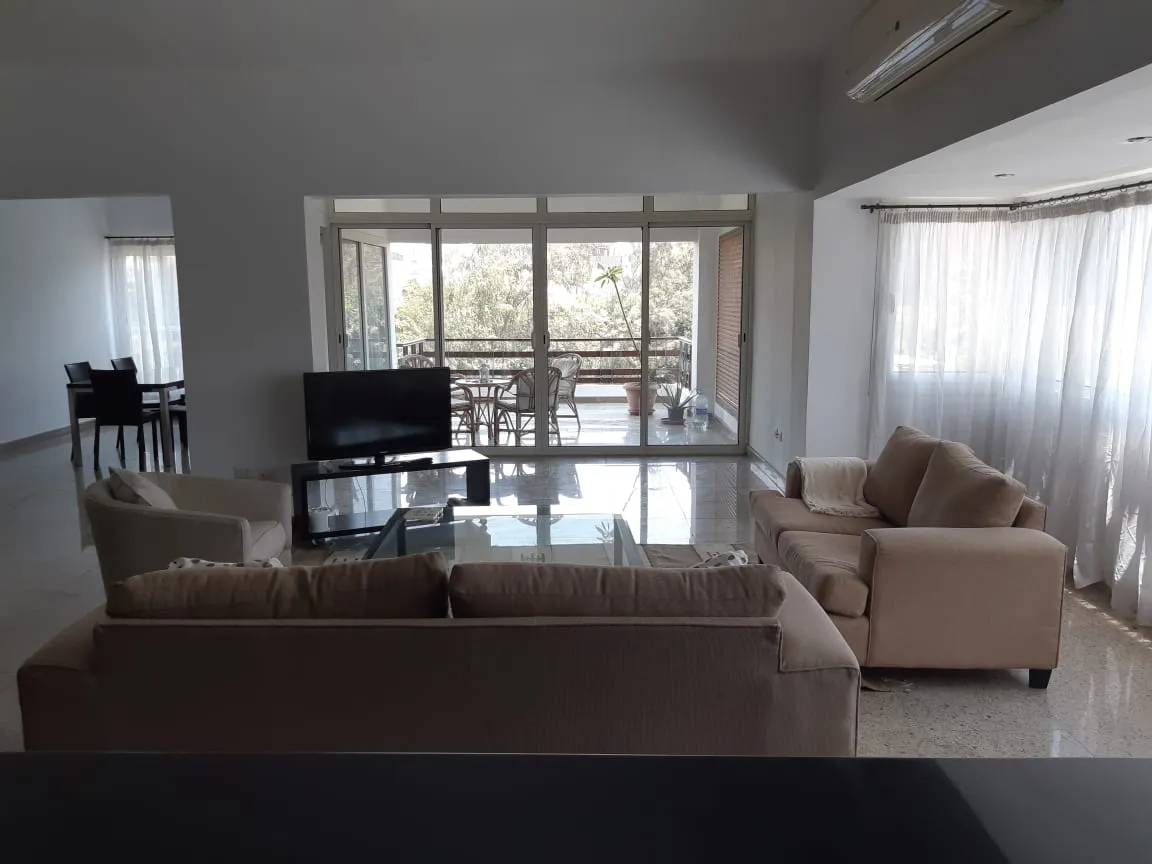The Ultimate Guide: Determining the Right Rent Payment According to Experts
Author
Ali Ashour
Time
13 Min.
Language
English
Created:
4/6/2024
Updated:
4/15/2024
The Ultimate Guide: Determining the Right Rent Payment According to Experts
Deciding on the right rent payment is crucial for both property management and tenants, ensuring financial stability and satisfaction in the housing market. Navigating through rental payments, security deposit requirements, and various payment options, including the ability to pay rent online, can significantly impact the overall rental experience. This becomes especially pertinent in diverse markets like Cairo, Egypt, where areas like Maadi offer a range of rental opportunities.

This guide delves into understanding rent affordability, exploring factors influencing rent payment decisions, and examining the relevance of the 30% rule today. Strategies for balancing rent with other financial responsibilities and finding affordable housing options will be outlined, providing readers with comprehensive insights into making informed rent payment choices.
Understanding Rent Affordability
Understanding rent affordability is crucial for maintaining a balanced budget and achieving financial well-being. The process involves several key factors:

- Income and the 30% Rule: It's generally advised to allocate around 30% of your gross income to rent. However, this guideline requires adjustment based on personal financial situations and goals. For those earning significantly more, this percentage might not be practical or necessary.
- Expenses Impacting Rent Affordability:
- Existing Debts: Monthly commitments such as student loans and credit card payments can limit the amount available for rent.
- Living Expenses: Utilities, groceries, transportation, and healthcare are essential costs that must be factored into one's budget.
- Savings Goals: Ensuring rent does not hinder the ability to save for emergencies or investment opportunities is vital.
- Adjusting to Circumstances: Special situations may necessitate spending above or below the budgeted amount for rent. Factors like job relocation, unstable living conditions, or specific savings objectives might dictate this adjustment. Additionally, the location of the rental can influence commuting costs and access to amenities, further affecting affordability. Strategies to manage rent affordability include negotiating bills, comparing insurance options, reducing grocery expenses, finding a roommate, or seeking move-in specials.
Factors Influencing Rent Payment Decisions
When deciding on rent payment, several factors come into play, significantly influencing both landlords and tenants' decisions.
- Payment Methods:
- Traditional: Checks, cash, and bank transfers offer proven reliability but might lack convenience.
- Digital Solutions: Online platforms, mobile apps, and digital wallets enhance ease of use and tracking but require careful consideration of:
- Fee structures: Varies widely among platforms.
- Security measures: Essential to protect financial information.
- User reviews: Offers insights into reliability and user satisfaction.
- Accepted payment methods: Ensures compatibility with tenant's preferred payment method.
- Legal and Financial Considerations:
- Rent withholding and increases: Governed by local and federal laws.
- Paying rent with credit: Impacts credit score and financial health.
- Record keeping: Crucial for dispute resolution and financial planning.
- Property Features and Market Conditions:
- Number of bedrooms and bathrooms directly impacts rent pricing.
- Amenities like pets allowance, parking, and washer/dryer availability play a pivotal role.
- Location, property condition, and updates can significantly affect rent.
- Economic conditions, market trends, and competition shape rental rates.
Understanding these factors allows both parties to navigate the rent payment process more effectively, ensuring a fair and satisfactory agreement.
The 30% Rule and Its Applicability Today
The 30% income rent rule serves as a guideline, suggesting that one's housing costs should ideally not surpass 30% of their gross monthly income. However, this rule is not set in stone and should be seen more as a flexible benchmark rather than a strict limitation. It's an arbitrary figure that may not fit all household budgets, underscoring the importance of tailoring financial decisions to individual circumstances and goals.
- Rule of Thumb:
- The 30% rule: Aim to spend no more than 30% of gross income on rent.
- Adjustments: Consider spending 25-27% for more budget flexibility.
- The 1% Rule for landlords: Charge about 1% of the property's total market value as monthly rent.
- Housing Value Consideration:
- Consumption Value: The immediate benefits and utilities derived from living in the property.
- Asset Value: The long-term investment potential of the property.
Determining the right budget for housing involves a careful evaluation of one's financial situation, goals, and the intrinsic value of the property, both as a living space and an investment. Typically, rents fluctuate between 0.8% and 1.1% of the home's value, providing a benchmark for renters and landlords alike to gauge appropriate rent levels. This flexible approach acknowledges the diverse financial landscapes of tenants and property owners, encouraging a more personalized strategy in managing housing expenses.
Balancing Rent with Other Financial Responsibilities
Balancing rent with other financial responsibilities can be a complex task, but with strategic planning, it's possible to maintain financial health while enjoying the benefits of renting. Here are some strategies to consider:

- Financial Planning for Renters:
- Emergency Fund: Before considering homeownership, ensure you have a solid emergency fund, ideally covering 3-6 months of living expenses.
- Rent Payment Strategies: If facing financial hardship, communicate with your landlord about possible payment plans or seek out local assistance programs.
- Home Buying Considerations:
- Down Payment: Aim for a 20% down payment to avoid PMI, adding to your monthly costs.
- Closing Costs: Be prepared for approximately $10,000 in closing costs, an often-overlooked expense in the home buying process.
- Debt-Free: Strive to eliminate all debt, excluding your mortgage, to afford a higher monthly payment and build equity faster.
- Assistance and Negotiation:
- Rental Assistance: Explore state and local organizations for rental payment help. Calling 211 can connect you with local resources.
- Lease Negotiation: Review your lease for any grace periods or subletting options that can offer flexibility during financial strain.
By carefully managing your rent alongside other financial obligations, you can ensure a stable and secure living situation while working towards future financial goals.
Strategies for Finding Affordable Rent
In the quest for affordable rent, several strategies stand out for their effectiveness and practicality. Here's a closer look at how tenants can navigate the rental market to find housing that fits their budget:
- Online Resources and Networking:
- Utilize platforms like Facebook, Nextdoor, and SpareRoom alongside Zillow, Rent.com, and Apartment Finder to discover a wide range of housing options.
- Engage in networking through social media, word-of-mouth, and local community boards for insider information on deals not listed on popular websites.
- Government and Assistance Programs:
- Explore low-income housing assistance programs such as Section 8, which offers financial aid for housing to eligible individuals and families.
- Contact local affordable housing authorities for access to low-interest loans and financial counseling services aimed at securing affordable living spaces.
- Creative Living Arrangements:
- Consider alternative housing options such as efficiency units, shared living situations, or becoming a property caretaker to significantly reduce living expenses.
- Look beyond the traditional apartment setups and weigh options like homes, townhomes, and duplexes, which might offer better deals in certain areas.
These approaches not only broaden the scope of potential housing options but also empower tenants to make informed decisions based on their financial situations and lifestyle preferences.
Conclusion
Through this blog, we've explored the multifaceted aspects of determining the right rent payment, addressing key considerations such as rent affordability, the 30% rule, balancing financial responsibilities, and strategies for finding affordable housing. Our discussion underscored the importance of aligning rent payments with one's financial situation and goals, while also navigating the complexities of the rental market, from payment methods and legal considerations to the intrinsic value of housing as both a consumption and investment asset. This holistic approach aims to empower readers with the knowledge to make informed decisions that enhance their financial stability and housing satisfaction.
As the housing market continues to evolve, the insights presented here serve as a foundational guide for both tenants and landlords to navigate their rent-related decisions effectively. The significance of understanding one's financial health, utilizing strategic approaches to affordability, and embracing flexibility in housing choices cannot be overstated. By considering the broader implications of these decisions and the potential for further research or action, individuals can better position themselves in the rental market, ensuring that their housing choices contribute positively to their overall quality of life and financial well-being.






